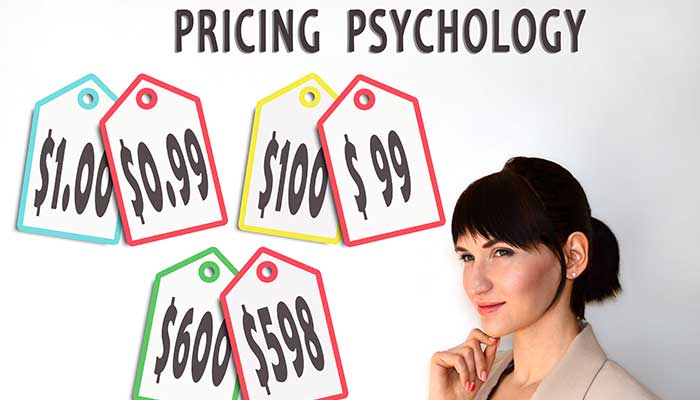If you are a business owner or a marketer, you will have to face the process of putting a price on your services and  products. This is an important decision making process in any business. Pricing has a significant impact on the minds of the customers. There are many people who face difficulty in this process as they lack the experience and knowledge of how to charge people, although, they may be having the understanding regarding what their customers require.
products. This is an important decision making process in any business. Pricing has a significant impact on the minds of the customers. There are many people who face difficulty in this process as they lack the experience and knowledge of how to charge people, although, they may be having the understanding regarding what their customers require.
Here are some research studies regarding pricing of products that will help you better understand the pricing techniques and methods:
- “Useless” price points
The difference that you have between your pricing points is going to greatly impact your consumer’s perceived value of the product and how they make up their mind on what to buy.
For example, consider this three price points
- A print + web subscription for $120
- A print only subscription for $120
- A web only subscription for $100
The second option does not make sense and seems to be “useless” as you would be happy getting both a print and web subscription for $120 (A) rather than just getting the print only subscription (B) for $120.
Here it is seen that option B, while it was useless, did assist the customers in recognizing the value in option A, and helped them turn to “value hunters” than “Bargain hunters”. With appropriate pricing, customers get options that fit in their budget and also influence the customers by justifying the extra price.
- Powerful Number – 9
If you visit any store, you will see many prices that end in number 9. It is true that people are affected by $99 price point in comparison to $100. This tactic is being known as the use of “charm pricing”.
Researchers have found that there has been about 20% to 25% increase in sales where charm prices have been used in comparison with any near rounded price points.
It seems like the power of 9 does have a hold.
- Comparative pricing – advantage or disadvantage?
Comparative pricing is not always as reliable as it is made out to be. It can affect the customer’s opinion of the product in some ways.
For example, if you walk in to a chemist or drugstore and would want to buy a product. The same product may be available with two different brands – one expensive than the other. In this case you may not go with the cheaper one as you might assume that the expensive one has less risks compared to the cheaper one. Also, worst case scenario, you may not buy both as you get confused.
There are studies that have found comparative pricing bringing in unintended results and according to Itamar Simonson, “it can change the behavior of consumers in very fundamental ways.”
To learn more advanced strategies and methods on pricing psychology, attend this webinar “The Psychology of Price and Why it Matters” by expert speaker James E. Dion to learn more advanced methods to reduce the impact of profit robbing price decreases. Pick up the key to and delve deeper into the minds of consumers to learn how they perceive and process price information.



